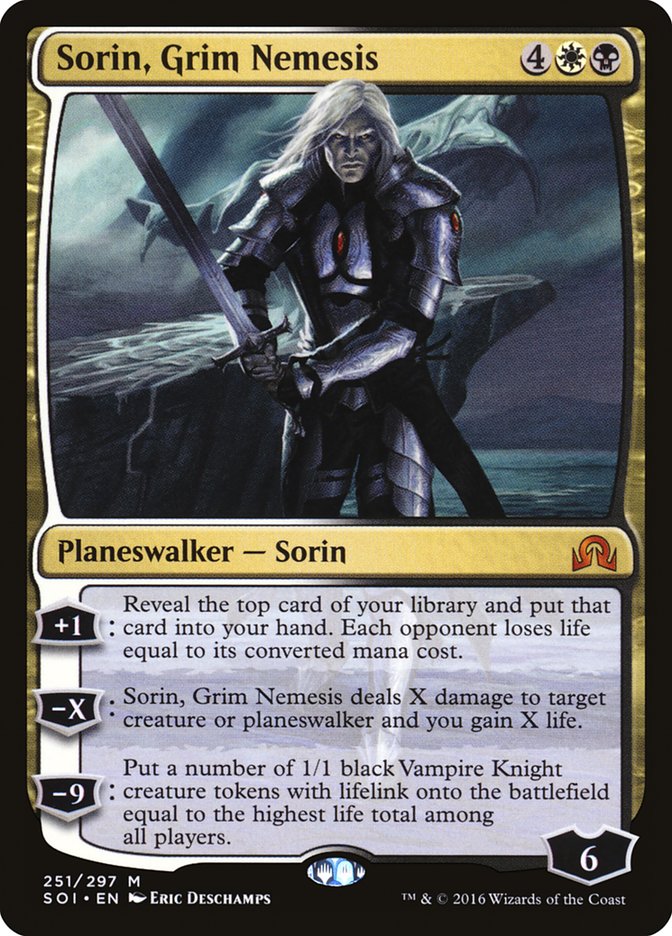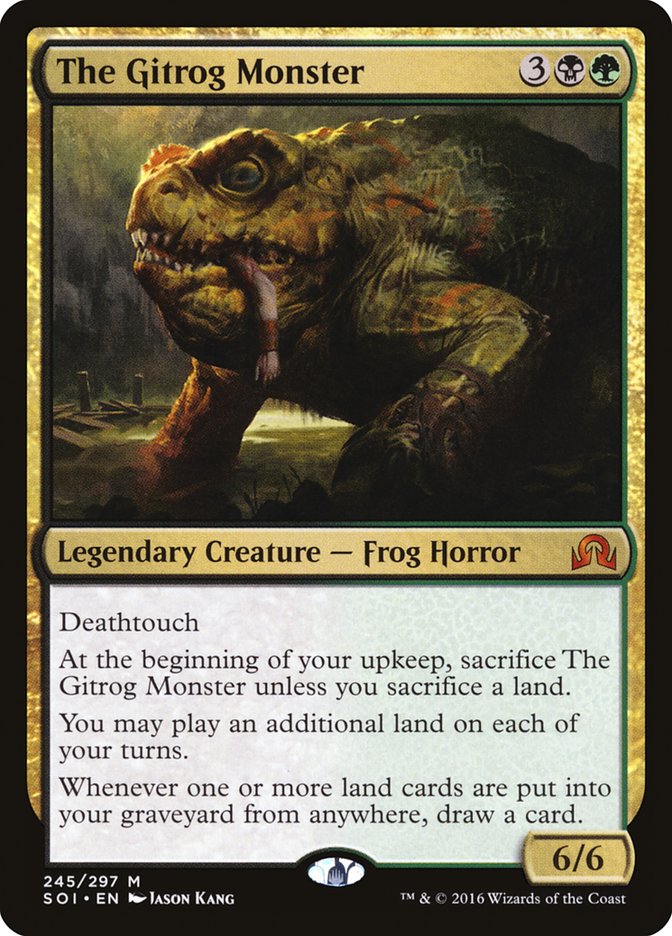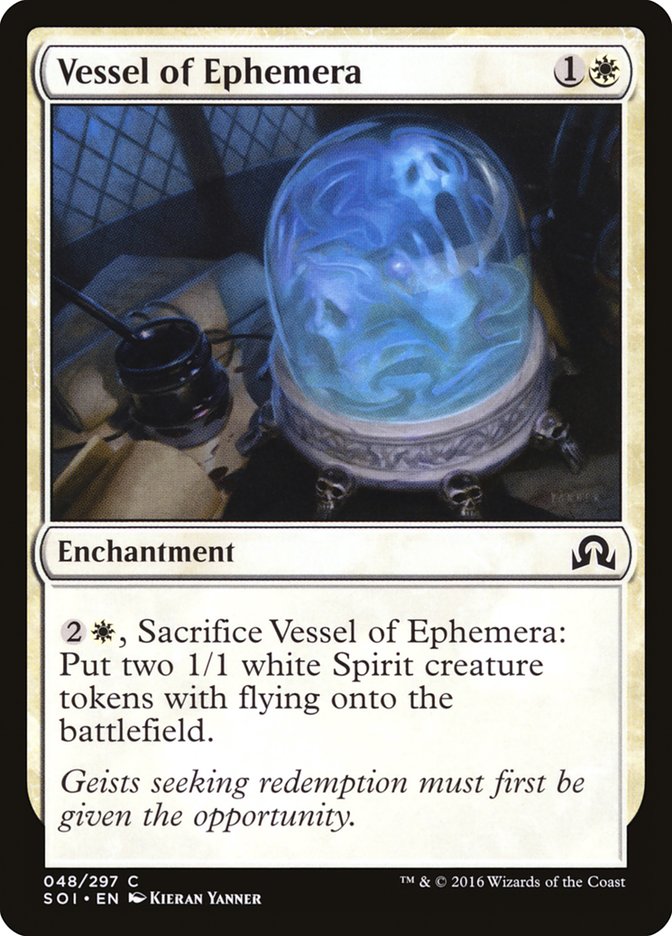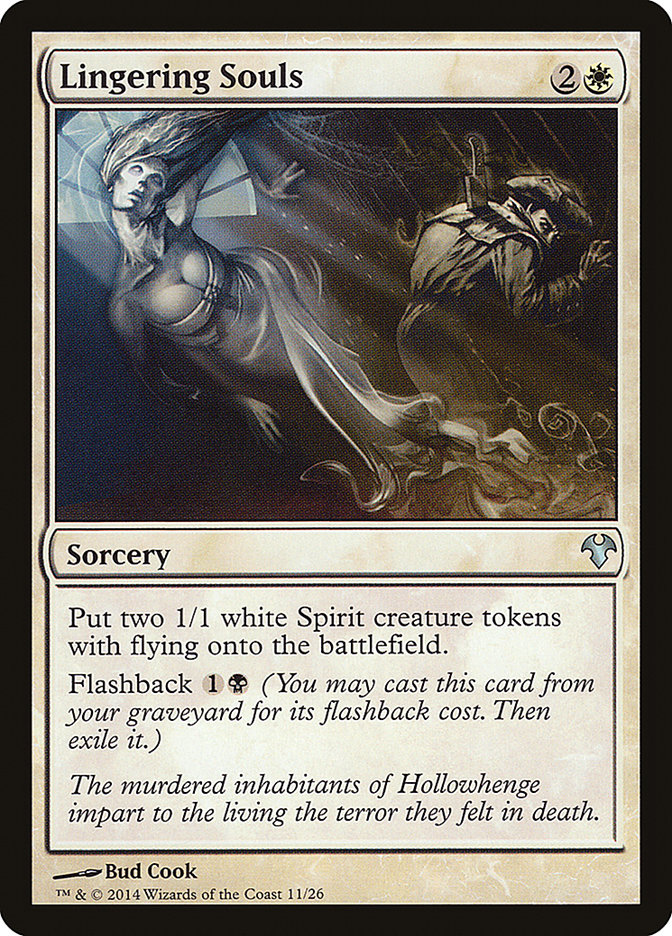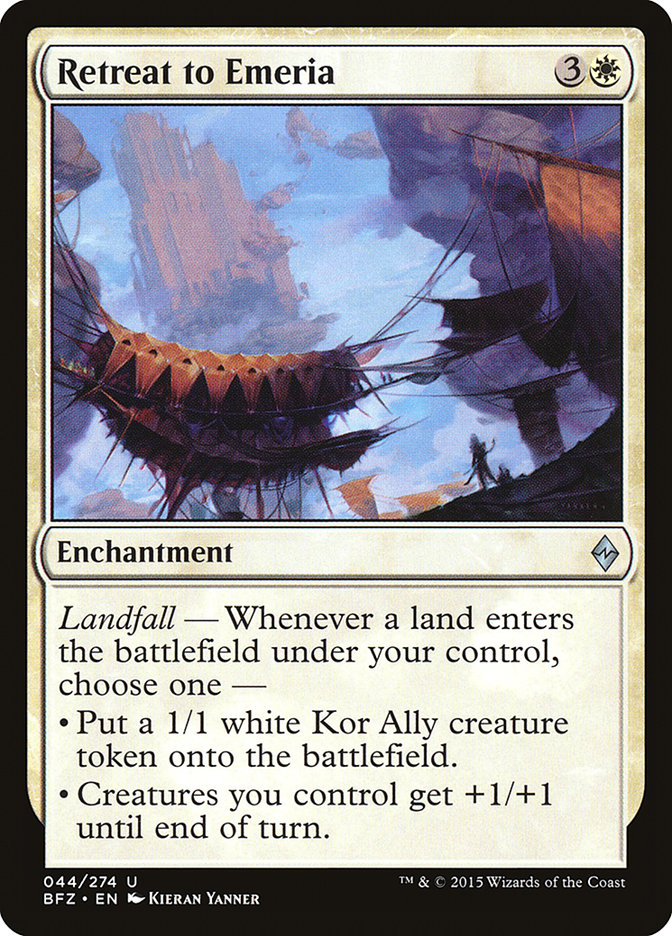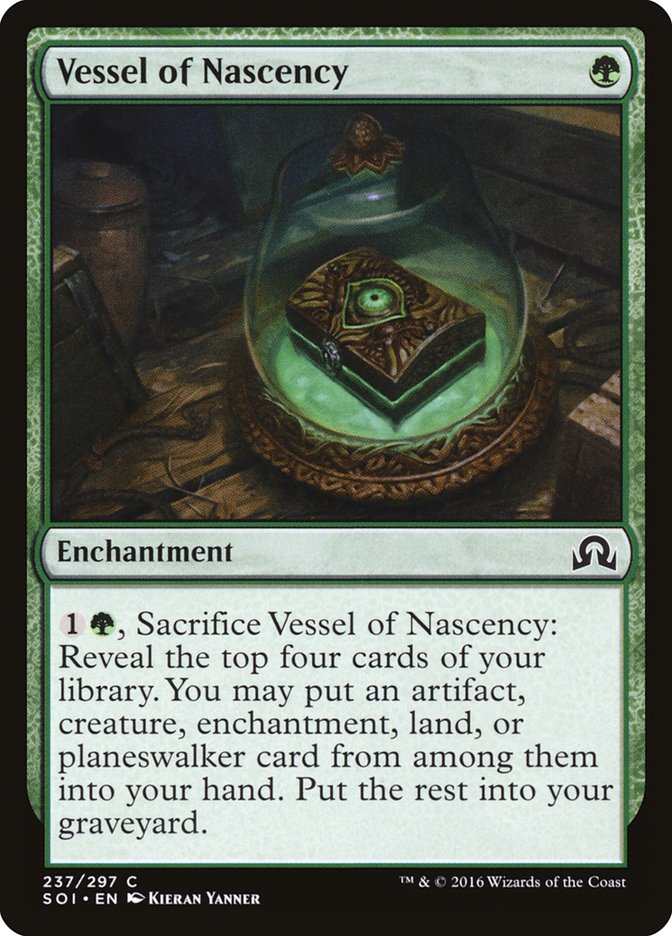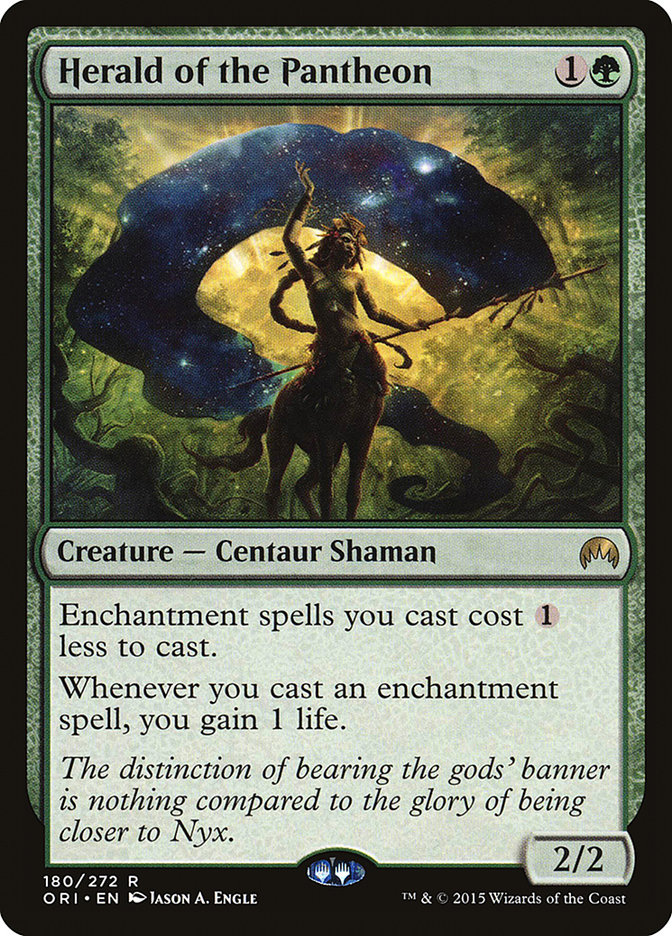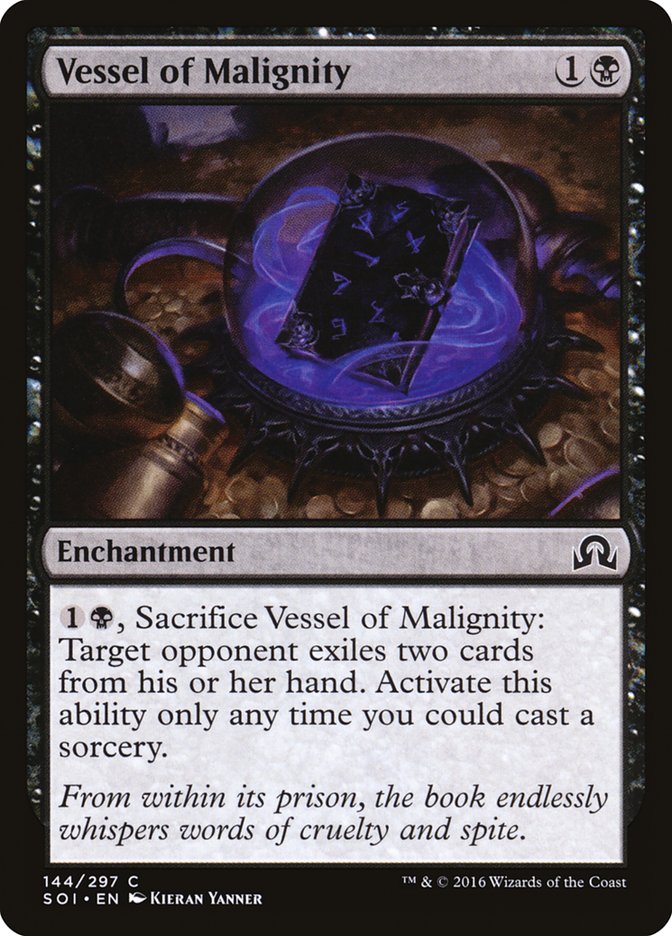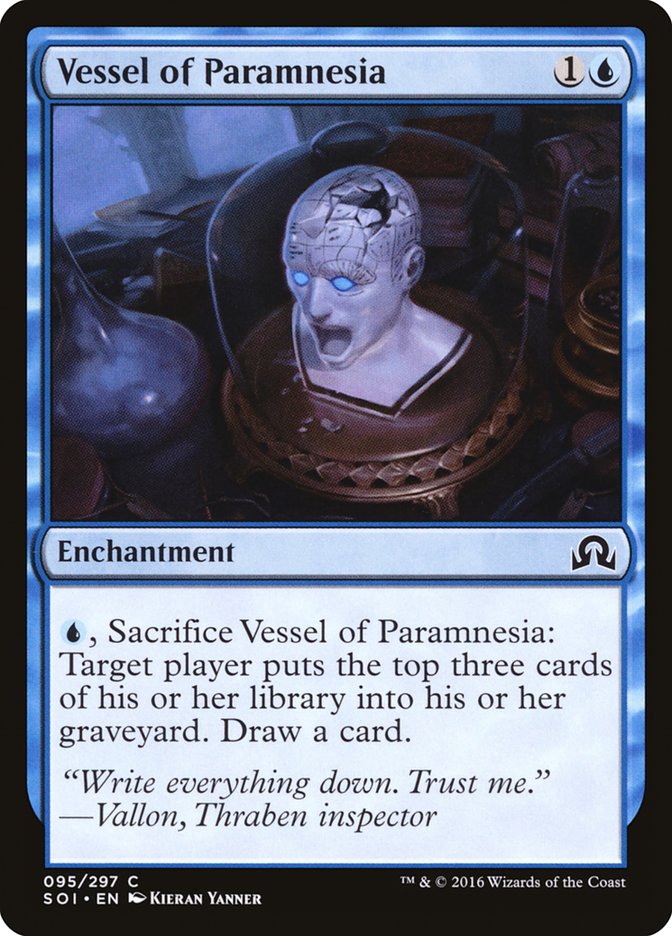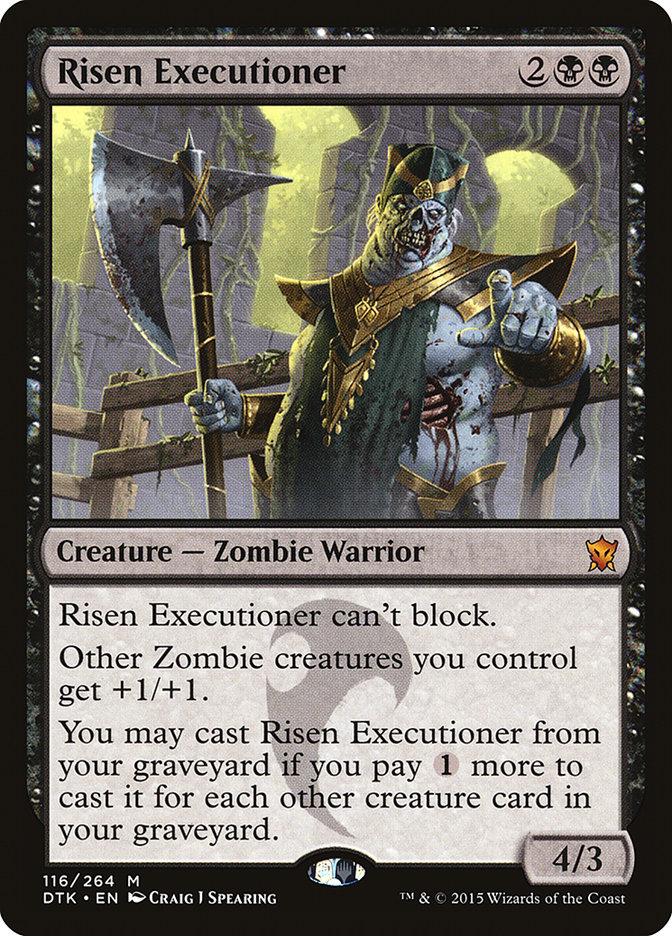Yeah, yeah, yeah. I know. Four planeswalkers, incredible removal, red creatures with nine toughness. I get it; Shadows over Innistrad is full of eye-popping cards. Then there’s the fact that the set is “dripping with flavor” and “a flavor home run” and full of callbacks to the first visit to the plane. That’s all well and good, and has been written about a whole bunch. I’m as excited as anyone to cast Sorin, Grim Nemesis and The Gitrog Monster, to draft Startled Awake, to grind value with Relentless Dead.
More than most settings, Innistrad lends itself to both ends of the power-flavor spectrum. There’s some middle ground, though. Some cards that aren’t getting a ton of hype, that aren’t in every speculative decklist, will likely find their way into my hands before we’re too much older. Think the kind of card that most will recognize as powerful, but that never make it past the “I like this” phase into any sort of brew. That’s what we do here, folks: we brew. There is more to this game than competing at the highest level, and plenty of us who go to FNM hoping to have fun first and win second. As I work through the freshly-released full set list, I have an eye on some of those cards for this particular article.
The Vessels
Wait, I’m writing about a cycle of commons? Absolutely I am. I was actually surprised to see a black expansion symbol on some of these cards, as the power level is really quite high. As a cycle, it seems clear that they were put in the set to help turn on delirium, something that likely needs the help with the lack of fetchlands in the new Standard. I think the cycle has some potential cross-format possibilities with their ability to grow a Tarmogoyf while providing value, but in Standard I think most of these will see play.
Vessel of Ephemera at first glance looks like an overcosted Lingering Souls. It’s hard to argue with that view, but I do see upside here that should not be overlooked. For one thing, we can get those Spirits at instant speed, whenever we need them. The two-mana investment is low to start with, and paying three to get the payoff is not a huge ask. It would still be a mediocre Constructed card with solid Draft implications were it not for the aforementioned delirium and one other card: Starfield of Nyx.
The Starfield does not rotate and is already on the verge of being powerful. I tried to do something with it, processors, Silkwrap, Stasis Snare, and Evolutionary Leap but it fell just a little short. Having this as a token-making self-sacrificing enchantment to bring back each turn might be the piece that deck was missing. I’ll certainly be going out of my way to find out. Flying is still a powerful mechanic that does not get enough love. We’ve all seen games won on the back of the opponent being unable to deal with Spirit tokens in the past.
G/W Tokens is looking like a solid strategy, with this card and Hanweir Militia Captain joining Secure the Wastes; Oath of Gideon; Gideon, Ally of Zendikar himself; Retreat to Emeria; and Nissa, Voice of Zendikar. On the outskirts of that deck we have Crawling Sensation, Second Harvest and all the green Eldrazi Scion-making creatures. The best mass-pump spell is in black (Swarm Surge), but we have plenty of options in white: Great Teacher’s Decree, Inspired Change, and Kytheon’s Tactics are all potentially playable as finishers in the event that Nissa and Gideon aren’t enough.
If we’re building the Starfield of Nyx deck, Herald of the Pantheon is almost definitely a four-of in there. That puts us in G/W, which also means we’re going to want to take a look at Vessel of Nascency. Fortunately we don’t have to look too long to realize how amazing it is. With Oath of Nissa still legal and Traverse the Ulvenwald also in the set, green has no lack of one-mana spells to dig for specific cards.
Granted, it’s a bit of a stretch to call the green Vessel a one-mana card when we have to pay 1G to activate it, but it has a much broader range of answers to find. It also has the hidden Lansdell-proof bonus of not encouraging me to keep a one-lander. Trust me; that’s worth a lot.
On the face of it we might be tempted to think that the one-mana cost on Vessel of Nascency is an indication that its effect is weaker than the others. We’d be wrong. With a lack of one-drop mana creatures in Standard, our green decks are left with a dearth of options on the first turn. Oath of Nissa got so much hype because of that fact, essentially drawing us a card on that turn. Although we have to wait a little longer for this card, we do have more things to choose from.
What has me the most excited about Nascency is the way it adapts late-game to whatever we need. One thing that Oath and Traverse cannot really do is find removal, but we have Quarantine Field, Stasis Snare, and Silkwrap as removal that we can find here, as well as Isolation Zone if that ever becomes a thing. If we’re ready to switch gears to start winning the game, we can find anything from Sigil of the Empty Throne to our planeswalker of choice to something like Archangel Avacyn or Ulamog, the Ceaseless Hunger. Starfield of Nyx lets us look as often as we want. Since we’re in green, we could even look to Den Protector as a potential way to recur a quasi-tutor. I am very, very high on this card.
I am almost as high on Vessel of Volatility, if for different reasons. I wrote about Dragonstorm back when Dragons of Tarkir was the new hotness, but the addition of Dragon Tempest never really materialized as a thing. The reason my pet Modern deck is constantly bubbling below the Viability Point is not being able to get our storm count high enough but the ability to reliably reach nine mana at an early-enough turn that it matters. A storm count of four is often enough to win, but ideally we will need more spells than that to hit nine mana anyway.
Vessel of Volatility fixes the problem admirably. The ideal turn for Dragonstorm to go off is turn 4, when our Lotus Bloom comes off suspend. That allows us three turns to cast cantrips and sculpt our hand. We can spend some of that time casting a two-mana enchantment that will net us mana when we crack it. Even if we end up casting it on the turn we do go off, it is mana-neutral, so it will not hurt us. Spending two mana to get four allows us to cast a Desperate Ritual with a second one spliced and then cast the second one, putting us at ten mana with three spells cast and two lands tapped. I’m in love.
There are potential Standard applications too. Brad Nelson once taught me about figuring out whether a format was a 2/4/6 or a 3/5/7 format when it came to ramping and fundamental turns. Somehow the coming Standard seems to be a 5/7/9 one with many powerful spells at seven mana, but our ramp after rotation is mostly in the 2/4/6 bracket: Leaf Gilder, Hedron Archive, Explosive Vegetation, Nissa’s Renewal. Volatility lets us go from two mana on turn 2 to five mana on turn 3, or from four to seven later on. If G/R Eldrazi Ramp is going to be a major player going forward, having the ability to get to World Breaker first might be the key to the mirror match.
Moving into black gives us a very different kind of tool: Vessel of Malignity. Leaving aside the awkwardness of that word, this is the entry in the cycle that has the most reasonable application in midrange decks. By its nature it is not a very exciting card, but that doesn’t mean it isn’t a very good card.
Where this one excels is in the ability to “set it and forget it” until later in the game, when our opponent has only two cards remaining. Duress and Transgress the Mind are both staying in the format, giving us the information we need to know when to crack the Vessel for maximum value. Malignity is also the only one of the five that represents straight card advantage, which should not be overlooked.
While we don’t need to talk about where we want to play it (pretty much anywhere black mana is sold…), we can certainly discuss why this isn’t just a poor imitation of Mind Rot or Witness the End. First off, we’re on Innistrad. The last time we were here, filling the graveyard was a very good thing for us. Making our opponent discard in the midgame could easily prove disastrous, putting two nasty threats in easy reach of reanimation spells, for example. Not only does exiling help us avoid that problem, it also conveniently turns on any processors we might be holding. Where Witness the End cannot be cast before we hit four mana, we can run this out on the second turn and activate it at will thereafter.
One potential downside is the fact that our big discard spell is sitting there for our opponent to see. With that in mind, they can more easily play around it, sandbagging cards they can afford to lose. This does likely slow them down to some degree, but we can also avoid it being an issue by playing and activating on the same turn. Of course, if they just hold lands and we have Oblivion Sower (for example), we’re still pretty happy.
The upshot here is that there are a lot of hard-to-answer cards in the new Standard, and something that allows us to just remove them before they can do anything is going to be both powerful and flexible. The inability to activate in the draw step is a shame, but we can’t have it all!
Blue’s donation to this cycle is decidedly lower on the power scale than the other colors, but I have a sneaking suspicion it’s very easy to overlook the things this card can actually do. Let’s get level zero out of the way: you’re almost never milling your opponent out with this card. Sure, you might argue that effects like Roil Spout and Sweep Away can give some added value to milling the opponent, but I think we all know that milling three random cards from your opponent is almost always useless. Heck, in this set, it might be downright harmful.
One thing Vessel of Paramnesia has going for it is the inclusion of those three magical words: draw a card. If that were the only text on the sacrifice effect, we’d probably consider running this. The two-mana front-end investment is a little steep, but we can cash in at any time for U to put an enchantment in the graveyard and get a replacement card. Unexciting, but far from the worst card ever to see play.
Of course, that’s not all it does. We also get to mill ourselves, which, in the right deck or even the right format, is akin to drawing three cards anyway. Sure, we don’t have Treasure Cruise or Dig Through Time anymore to really enjoy that swollen graveyard, but we do have Geralf’s Masterpiece and Stitchwing Skaab to return from the graveyard, Ever After to reanimate any huge creatures we happen to mill over, Rise from the Tides to make approximately a thousand Zombies…and that’s just from this set. Den Protector and Deathmist Raptor are still legal, as is Risen Executioner.
We haven’t even looked at how this card can affect older formats like Modern, where Thought Scour into Gurmag Angler or Tasigur, the Golden Fang has historically been good enough to win games. It’s probably too slow for Legacy, but milling over a Griselbrand that was just Brainstormed to the top of your library also doesn’t seem like the worst play ever made, although I’ll grant that’s a stretch.
Vessel of Paramnesia is likely the worst of the lot, possibly slightly better than Ephemera, but it still has potential uses. That alone tells you how pushed this cycle of commons really feels.
Amused Vessel
When I sat down to write this article, I certainly didn’t think I would fill this much space with just five cards, and commons at that. To say I am excited for Shadows over Innistrad would be a gross understatement, to say the least. We didn’t get to talk about Diregraf Colossus, Rise from the Tides, From Under the Floorboards, Sin Prodder, Geier Reach Bandit, or a dozen other cards that have my brewer’s brain working on overload. But that’s okay, because now I am excited about five commons. I love this game.
Have fun at your Prereleases, everyone, and as always, thanks for stopping by.
Until next time…Brew On!


